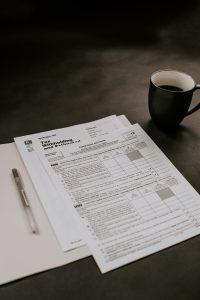Forex trading is an exciting way to invest your money, but it can be a little daunting if you’re new to the world of trading. One of the most important things to understand when trading forex is the use of indicators. Indicators are tools that help traders analyze the market and make informed decisions about when to enter or exit a trade. In this article, we’ll explain the different indicators you can use to trade forex and how they work.
Moving Averages
Moving averages are one of the most popular indicators used in forex trading. A moving average is simply an average of the price over a set period of time. For example, a 200-day moving average would be the average price of a currency over the past 200 days. Traders use moving averages to identify trends in the market. If the price of a currency is above the moving average, it’s considered a bullish trend, and if it’s below the moving average, it’s considered a bearish trend.
Bollinger Bands
Bollinger Bands are another popular indicator used in forex trading. They’re made up of two standard deviations above and below a moving average. Traders use Bollinger Bands to identify when the market is overbought or oversold. When the price of a currency moves outside the upper or lower Bollinger Band, it’s considered overbought or oversold, respectively. This can be an indication that the price of the currency is likely to reverse soon.
Relative Strength Index (RSI)
The Relative Strength Index (RSI) is a momentum indicator that measures the strength of a currency’s price action. It’s used to identify overbought and oversold conditions in the market. The RSI is a scale from 0 to 100, with 70 being the overbought level and 30 being the oversold level. Traders use the RSI to identify when a currency is likely to reverse from an overbought or oversold condition.
Fibonacci Retracement
Fibonacci retracement is a technical analysis tool used to identify potential support and resistance levels in the market. It’s based on the idea that prices tend to retrace a predictable portion of a move before continuing in the original direction. Traders use Fibonacci retracement levels to identify potential entry and exit points for trades.
Ichimoku Cloud
The Ichimoku Cloud is a technical analysis tool that uses multiple indicators to identify potential trends in the market. It’s made up of several lines, including the Tenkan-sen, Kijun-sen, Chikou Span, and Senkou Span A and B. Traders use the Ichimoku Cloud to identify potential trend reversals and to determine when to enter or exit a trade.
Conclusion
When trading forex, it’s important to use indicators to help you analyze the market and make informed trading decisions. There are many different indicators you can use, including moving averages, Bollinger Bands, RSI, Fibonacci retracement, and the Ichimoku Cloud. Each indicator has its own strengths and weaknesses, so it’s important to understand how they work and when to use them. By using indicators in your trading, you can increase your chances of success and make more informed trading decisions.






